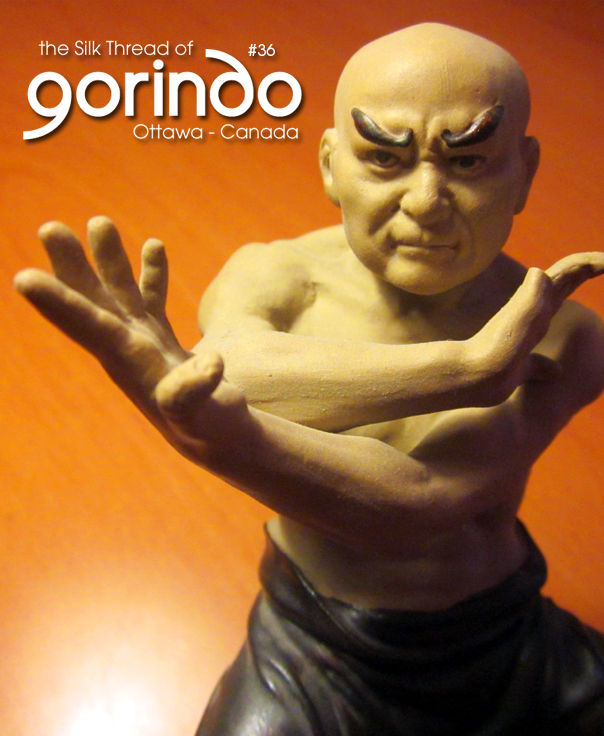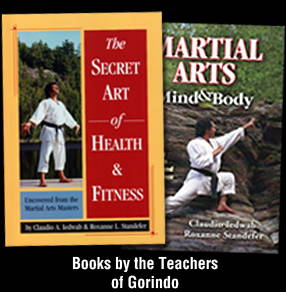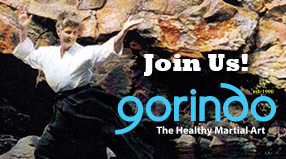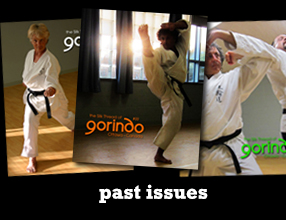
The Silk Thread of Gorindo - Ottawa - Canada
- What's Self-Defense - Part 4
Cover Photo by ©2013 Claudio Iedwab
What's Self-Defense - Part 4

The martial artist’s interpretation of discipline does not require a rigid or unnatural imprisoning of emotion, desire, or experience. Rather, it is the bringing of these elements into balance with a well-rounded physical framework and an enlightened moderation that provides the practitioner with a truly personal defense. While one can take inspiration from a Zen monk and study long and hard to discover and illuminate the truth, it does not necessarily follow that one has to choose the ascetic life of the monk.
There are many influences in the modern world that we must fortify ourselves against. Pollution, overpopulation, urban decay, and natural disasters, all have stressful effects on our lives, but there seems to be little we can do about them. The “small steps” philosophy subscribes to the “think globally, act locally” approach to taking action. In the same way, martial artists defend against the smaller scale stresses of work-related problems or family demands by taking good care of themselves and helping those around them to do the same.
Being able to avoid illness, injury, stress, and depression are skills far more likely to be actually needed than an ability to defeat an attacker in a dark alley, yet the same principles that the martial artist learns in the actual practice of personal defense can be used to fend off more mundane threats such as germs or tension. In the practice of ippon kumite (one-step sparring), for example, the student learns to analyze an attack and devise a strategy to meet it. He then practices it over and over in different variations so that it becomes second nature, effortless yet extremely effective.
The martial artist, when confronted with an opponent about to launch an attack, first tries to clearly identify the nature of the weapon: where is it (which hand or foot); where is it coming from; and the path of its trajectory (high, low, direct, or circular). Once those are ascertained, he will move out of the way of the assault. By ducking, sidestepping, moving backward, or even forward to get behind the attacker, his purpose is simply not to be there when the attack comes.
As additional insurance—in case he reacted too slowly, or the attack was particularly strong and fast—he will deflect or if necessary block the blow. In so doing, he sets himself up for a counterattack, a way of fighting back that will neutralize the attack and control it so that it cannot be launched again. This calculated response can be thought of as a metaphor for the martial artist’s approach to all aspects of personal defense.
The martial arts are not about going out and attacking what appears wrong in the world, nor about passively waiting for disaster to happen. Martial artists are engaged in studying how to control and utilize their bodies, thought processes, and emotions, in what appears to be self-defense against attack by others.
However, the main purpose of acquiring these skills is to enable them to deal with other problems in their lives. More importantly, they want to just get on with the activity of living, not focusing on problems, but rather on solutions. Rather than as defense against potential armed attackers, the keen awareness of physical sensations, developed intellect, and the spiritual awakening that can result from the study of martial arts, is better put to use in the appreciation of a gentle sunrise, the cultivation of a garden, or as a volunteer in the community.
Excerpt from “The Secret Art of Health & Fitness – Uncovered from the Martial Arts Masters” published book by Claudio Iedwab & Roxanne Standefer available at askSensei.com >>
Gorindo Martial Art Goshinjutsu - Illustrative sequence
Photos by ©2013 Roxanne Standefer / Assisted by Joe Pach
- What's Self-Defense - Part 4
« Click the Subscribe link on the left




